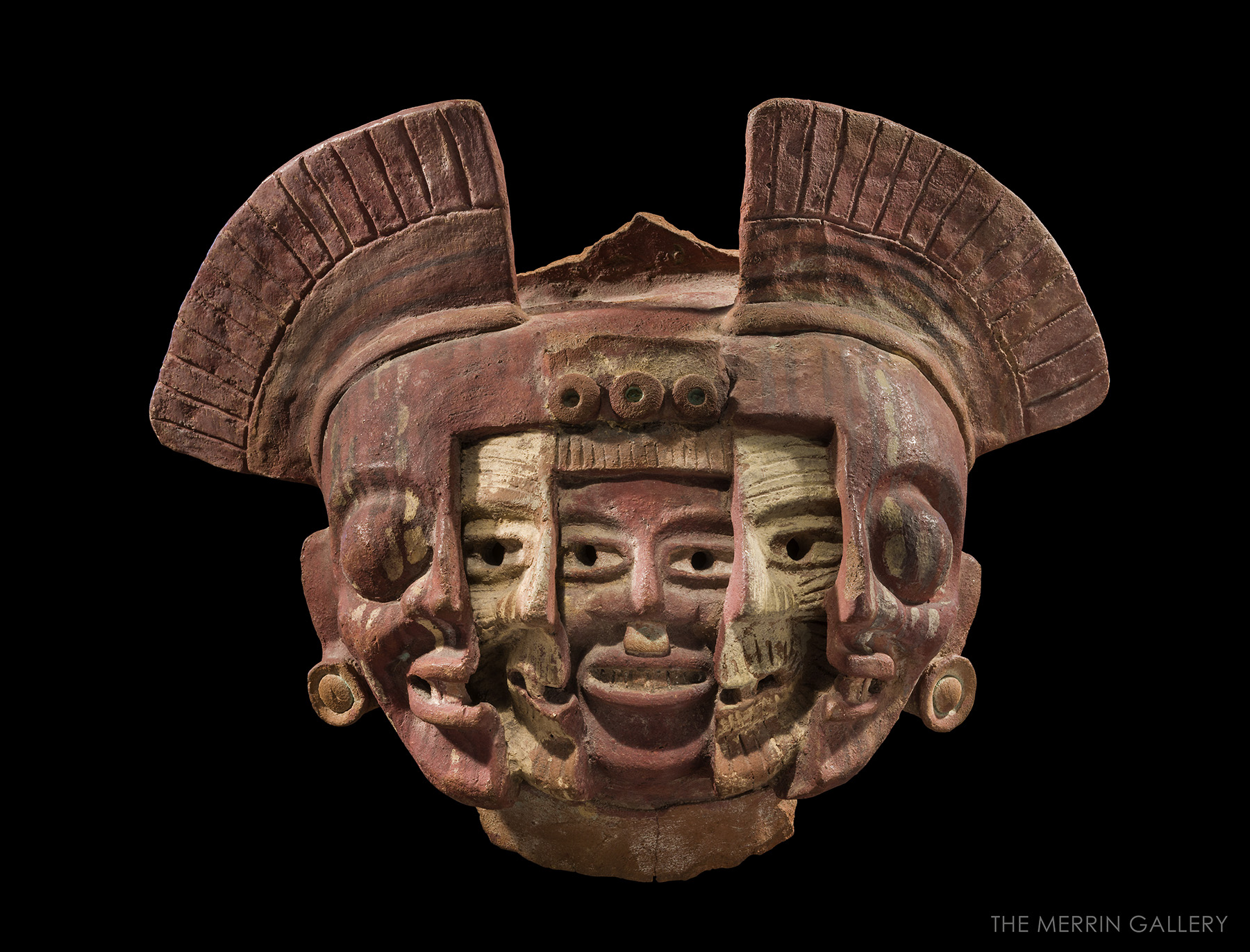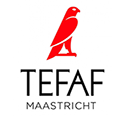Description
One of the most prevalent and important themes throughout ancient Mesoamerica is the fluidity of the life cycle, the interplay of death and rebirth and the strength of this duality. The concept of a constantly transforming and aging self that is present at any given moment is vividly and eloquently conveyed. This rare sculpture is one of only two examples known of this exact form. It was likely part of a tall brazier, similar to the Oaxaca urns of the Monte Albán region.
The central youthful face is covered by the mask of a wrinkled and aged figure, which in turn is covered by a mask of a deceased shown by the rounded and closed lids. Painted vertical stripes adorn the outer face, and the head is crowned by an upright plumed crest.
The cutaway mask device was also depicted in other eras and regions. One sees the “shared face” figurines from Tlatilco and Preclassic Central Mexico: the split life/death faces on pottery and stone in Oaxaca and Veracruz; and the X-ray style masks on figures of the Ik site Maya pottery.
This head belonged to Jay C. Leff, one of the important early American collectors of Pre-Columbian art. Leff’s collection, including this masterpiece, was widely exhibited and published. Easby (1966) cites a very similar head published in 1962 by Rubin de la Borbolla, and now in the Museo Nacional de Mexico (inv. n° 08-741814), see Moctezuma and Olguin, Aztecs, p. 431, cat. no. 130, noting it is possibly from the Teotihuacan region. For the urns of similar concept from Oaxaca, see Paddock, Ancient Oaxaca, 1970, p. 124, fig. 80, also see figs. 228 and 250.





